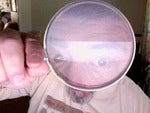Post by KeithL on Dec 7, 2023 16:49:14 GMT -5
Exactly...
Virtually all modern solid state amps have a DF of at least several hundred (unless they specifically chose to reduce it)...
So they're pretty well all past the point where increasing the number, or knowing that it was higher, would make any difference...
Some of those old speakers that were designed to be used with amps with very little damping sound "overdamped" with modern amps.
Since they're designed to have plenty of their own mechanical damping they work better without a lot of additional damping from the amp.
With a modern amp the bass will sound nice and tight but a little bit lacking in quantity.
I would expect the same to hold true for modern speakers specifically designed to work well with small tube amps...
(Although it is less of a factor with horn drivers than with non-horn-loaded cones and domes.)
Luckily it's extremely easy to reduce the damping factor of an amplifier and costs almost nothing.
If you have 8 Ohm speakers, and an amp with a very high damping factor, and you want a DF=8, just put a big 1 Ohm power resistor in series with each speaker.
(This was what Sunfire did on the "current source outputs" of their "load invariant power amps".)
You can find the on-resistance spec for many output devices... (actually for most transistors and FETs).
And, in a Class D output stage, where the output devices are switched fully on, this is rather important for efficiency.
However, in a Class A/B output stage, where the output devices are always only partly on, it's rather less important.
And, yes, the on-resistance is related to the output impedance...
However, the output impedance is then reduced by a multiple of the inverse of the amount of feedback applied...
(The more feedback you have the lower the output impedance goes for a given output device.)
And, of course, the amount of feedback applied is determined by open loop gain and the final design gain...
And, of course, while the design gain is usually a fixed number, the open loop gain is almost always frequency dependent...
And, yes...
This stuff is really interesting... but mostly to design engineers...
And there are lots of good text-books on the subject...
And there's a lot of good content about it on places like Youtube...
(Although, unfortunately, there's also a lot of uninformed content, so you do have to be careful about what you believe...)
 Right? I think? Doesn't this mean that DF is a red herring 'spec'? Those who 'chase' a high value are wasting time?
Right? I think? Doesn't this mean that DF is a red herring 'spec'? Those who 'chase' a high value are wasting time?
Some of those old-school 'big box' speakers needing little or NO amp damping at all sure sounded good....
RDON was a measureable of the devices we made. Lower better since less wasted power and heat.
It was measured at the wafer level and not, as far as I remember, part of any practical circuit. Maybe the
spec call-out WAS for a packaged device......?
Virtually all modern solid state amps have a DF of at least several hundred (unless they specifically chose to reduce it)...
So they're pretty well all past the point where increasing the number, or knowing that it was higher, would make any difference...
Some of those old speakers that were designed to be used with amps with very little damping sound "overdamped" with modern amps.
Since they're designed to have plenty of their own mechanical damping they work better without a lot of additional damping from the amp.
With a modern amp the bass will sound nice and tight but a little bit lacking in quantity.
I would expect the same to hold true for modern speakers specifically designed to work well with small tube amps...
(Although it is less of a factor with horn drivers than with non-horn-loaded cones and domes.)
Luckily it's extremely easy to reduce the damping factor of an amplifier and costs almost nothing.
If you have 8 Ohm speakers, and an amp with a very high damping factor, and you want a DF=8, just put a big 1 Ohm power resistor in series with each speaker.
(This was what Sunfire did on the "current source outputs" of their "load invariant power amps".)
You can find the on-resistance spec for many output devices... (actually for most transistors and FETs).
And, in a Class D output stage, where the output devices are switched fully on, this is rather important for efficiency.
However, in a Class A/B output stage, where the output devices are always only partly on, it's rather less important.
And, yes, the on-resistance is related to the output impedance...
However, the output impedance is then reduced by a multiple of the inverse of the amount of feedback applied...
(The more feedback you have the lower the output impedance goes for a given output device.)
And, of course, the amount of feedback applied is determined by open loop gain and the final design gain...
And, of course, while the design gain is usually a fixed number, the open loop gain is almost always frequency dependent...
And, yes...
This stuff is really interesting... but mostly to design engineers...
And there are lots of good text-books on the subject...
And there's a lot of good content about it on places like Youtube...
(Although, unfortunately, there's also a lot of uninformed content, so you do have to be careful about what you believe...)
Some of those old-school 'big box' speakers needing little or NO amp damping at all sure sounded good....
RDON was a measureable of the devices we made. Lower better since less wasted power and heat.
It was measured at the wafer level and not, as far as I remember, part of any practical circuit. Maybe the
spec call-out WAS for a packaged device......?




